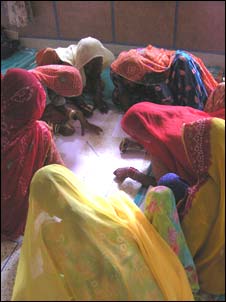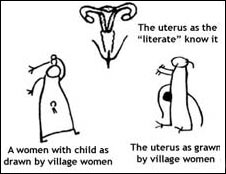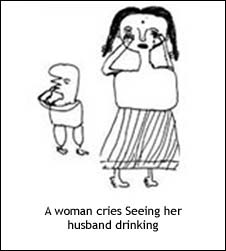| Communication |
Stages of Communication
|
![]() The Fallacy of Participation.
The Fallacy of Participation.
|
|
Although communication strategies have started emphasizing participatory methodologies, the participation of the target audiences remains constrained to rhetoric. Unfortunately when put into practice, programs neglect the strict hierarchies of villages with respect to age and gender. The authority of male elders often prevents youth and women from expression. Encouraging people's own self-expression through drawing can be part of the process of communicating and empowering. Furthermore, because vast numbers of women are not literate, their ability to communicate and share their knowledge and experiences significantly affects their inclusion in or exclusion from development processes. Urban designers need to re-examine their role in communication when working with non-literate and rural groups. They need to take on the role of facilitator and act as a catalyst in encouraging people's own visual expression, finding common visual languages and finally producing visuals that are responsive to the needs of the target audience. |
|
For example when a diagram of the uterus is field tested, most women say that it is a drawing of a flower. For women pregnancy is easily understood when drawn as a black round mass and the uterus as an inverted 'U'. Women whose visual perception differs from the urban must be involved in designing their own communication materials. The creative process has enormous potential to be empowering. |
|
During discussions, women who are often silent are able to communicate through drawings. Opening new avenues of communication can be part of a wider process of re-valuing and redefining women's experiences and roles in the community. In workshops where women are encouraged to express themselves through drawing, issues and concerns subtly surface which otherwise would remain hidden i.e. domestic abuse, heavy workloads, gender inequality, social exclusion, etc. The actualization of these issues through pictures can also be the beginning of discussions and new realizations. |



